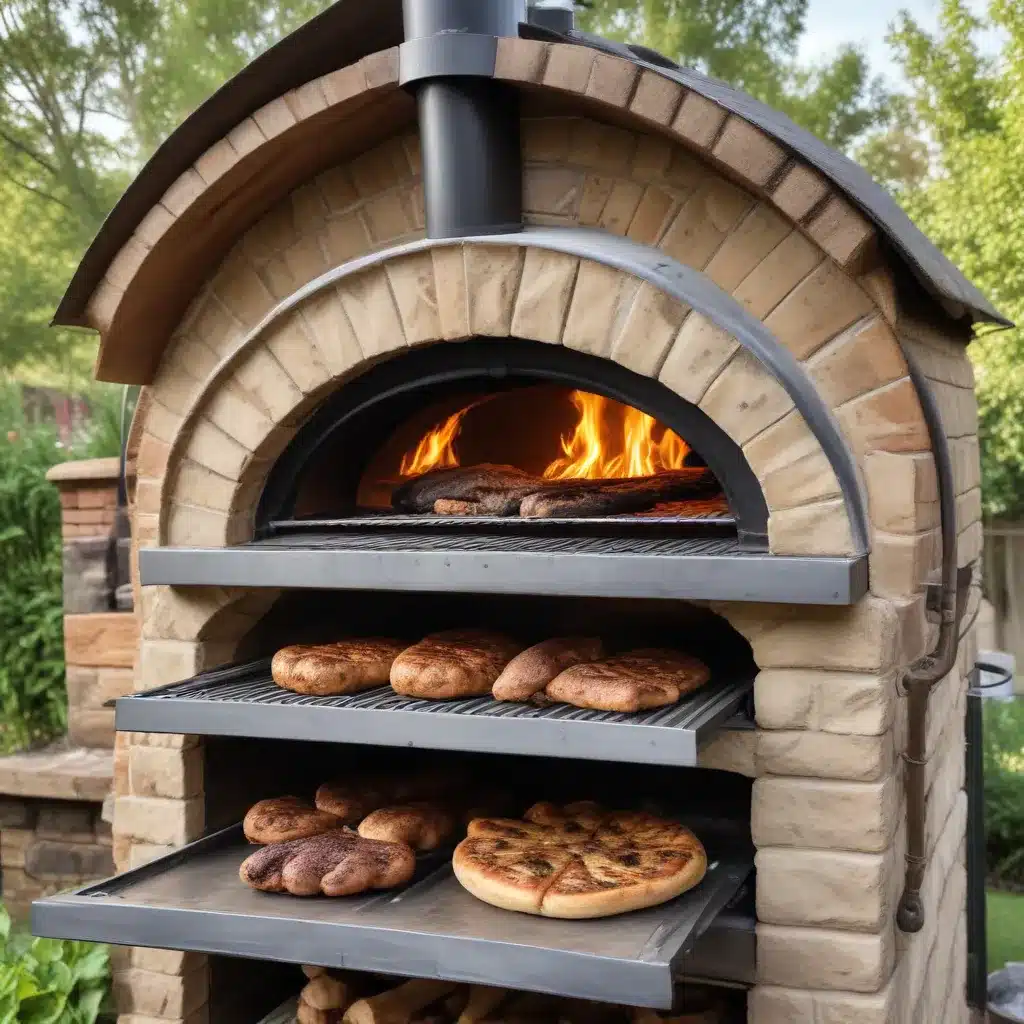
Unlocking the Potential of Wood-Fired Cooking
In the realm of culinary exploration, few experiences can match the allure and versatility of cooking with a wood-fired oven. As a seasoned expert in this domain, I’m excited to share the transformative power of these remarkable heating solutions and how they can elevate your everyday meals to new heights.
The Artistry of Wood-Fired Pizza
At the heart of the wood-fired oven experience lies the art of pizza-making. Drawing inspiration from the time-honored traditions of Neapolitan and neo-Neapolitan styles, we’ll explore the nuances of crafting the perfect pizza crust.
One of the key elements in achieving that coveted balance of crispness and chewiness is the dough itself. The 72-hour pizza dough method, as championed by the Baking Steel team, is a game-changer. By allowing the dough to undergo a lengthy fermentation process, you’ll unlock a depth of flavor and an exceptional texture that will have your guests raving.
Incorporating techniques like the Rubaud method for kneading and the stretch-and-fold technique, this dough recipe yields a lively, well-structured base that can withstand the intense heat of a wood-fired oven. While the original recipe calls for a 68% hydration ratio, I’ve found that a 76% hydration dough works better in my high-temperature Ooni oven, resulting in a lighter and crisper crust.
The beauty of this dough lies in its versatility. Beyond the classic Margherita, you can experiment with a wide range of toppings, from savory Swiss chard and gruyère to decadent coffee-infused dessert pizzas. The key is to let the natural flavors of the dough shine through, without overwhelming it with overpowering ingredients.
Mastering the Art of Wood-Fired Cooking
But the potential of a wood-fired oven extends far beyond pizza. These remarkable heating solutions offer a world of culinary possibilities, from roasting meats and vegetables to baking artisanal breads and even slow-cooking stews and braises.
One of the primary benefits of wood-fired cooking is the unparalleled depth of flavor it imparts. The interplay of the live fire, the radiant heat, and the natural aroma of the wood creates a unique sensory experience that simply can’t be replicated in a conventional oven.
As Samin Nosrat eloquently explains in her acclaimed book Salt, Fat, Acid, Heat, the relationship between time, temperature, and the key elements of cooking – salt, fat, acid, and heat – is paramount in unlocking the true potential of any dish. This principle holds true whether you’re baking a loaf of sourdough or roasting a succulent pork shoulder.
By understanding the nuances of wood-fired cooking, you can harness the power of these elements to elevate your everyday meals. Paying attention to the interplay of time and temperature, as well as the strategic application of salt and other seasonings, can transform even the simplest ingredients into culinary masterpieces.
Embracing the Artisan Approach
One of the joys of wood-fired cooking is the artisanal nature of the process. Unlike the precision and control of a modern, digitally-regulated oven, a wood-fired oven requires a more hands-on, intuitive approach. This can be daunting for some, but it’s also where the true magic happens.
As you stoke the fire, monitor the temperature, and adjust the airflow, you’ll develop a deeper connection with the cooking process. You’ll learn to rely on your senses – the sight of the flames, the sound of the crackling wood, the aroma of the food – to guide your decision-making. It’s a dance of patience, skill, and a deep appreciation for the art of live-fire cooking.
This artisanal approach also extends to the sourcing and preparation of your ingredients. By cultivating relationships with local millers, farmers, and producers, you can access the highest-quality, freshest ingredients to showcase in your wood-fired creations. Investing in the right tools and techniques, such as the Rubaud method for kneading dough or the use of a baking steel for superior heat retention, can further elevate the quality of your wood-fired meals.
Fostering Community and Shared Experiences
Beyond the culinary delights, a wood-fired oven can also serve as a catalyst for bringing people together. Cooking with fire has a primal, communal appeal that transcends cultures and generations. Gathering around the oven, watching the flames dance, and sharing in the process of creating a meal can be a truly transformative experience.
Whether you’re hosting a pizza party with friends, a casual backyard gathering, or an intimate dinner party, a wood-fired oven can be the centerpiece that brings people together. The interactive nature of the cooking process – from tossing dough to monitoring the oven temperature – encourages participation and fosters a sense of shared ownership in the final result.
As you embark on your wood-fired cooking journey, embrace the opportunity to not only nourish your body but also cultivate meaningful connections with your loved ones. The memories and traditions you build around your wood-fired oven will become cherished parts of your culinary legacy.
Conclusion: Embracing the Warmth of Wood-Fired Cooking
In a world that often moves at a frantic pace, the wood-fired oven offers a refuge – a place to slow down, connect with the elements, and rediscover the joy of crafting exceptional meals. By mastering the art of wood-fired cooking, you’ll not only elevate your everyday meals but also cultivate a deeper appreciation for the process, the ingredients, and the shared experiences that make gathering around the table so profoundly meaningful.
So, whether you’re a seasoned home chef or a passionate newcomer to the world of wood-fired ovens, I encourage you to embrace the warmth, the flavor, and the community that these remarkable heating solutions can bring to your life. Unlock the potential of your wood-fired oven, and let the journey of culinary exploration begin.


